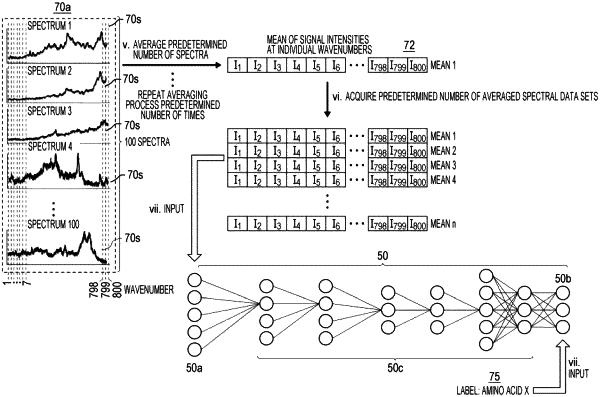| CPC G01N 33/54353 (2013.01) [G01N 21/255 (2013.01); G01N 21/314 (2013.01); G01N 21/658 (2013.01); G01N 33/54346 (2013.01); G01N 33/588 (2013.01); G01N 33/6812 (2013.01); G06N 3/08 (2013.01); G16C 20/20 (2019.02); G01N 2201/121 (2013.01); G01N 2201/1296 (2013.01); G16C 20/70 (2019.02)] | 20 Claims |

|
1. An analytical method for analyzing a test substance contained in a measurement sample, the method comprising:
generating a data set based on a plurality of optical spectra acquired from a plurality of locations in the measurement sample, a first one of the optical spectra being acquired from a first one of the locations, a second one of the optical spectra being acquired from a second one of the locations;
inputting the data set into a deep learning algorithm having a neural network structure; and
outputting information on the test substance, on the basis of an analytical result from the deep learning algorithm,
wherein the data set is generated by averaging, integrating, multiplying, or dividing signal intensities in a same wavenumber band or a same wavelength band of the plurality of optical spectra,
wherein the data set is generated by controlling a light source to irradiate the measurement sample and by receiving light from the measurement sample and generating, from the light and on a pixel-by-pixel basis, the plurality of optical spectra acquired from the plurality of locations in the measurement sample, and
wherein each optical spectrum of the plurality of optical spectra is a Raman spectrum in which each Raman spectrum is a surface-enhanced Raman scattering spectrum.
|